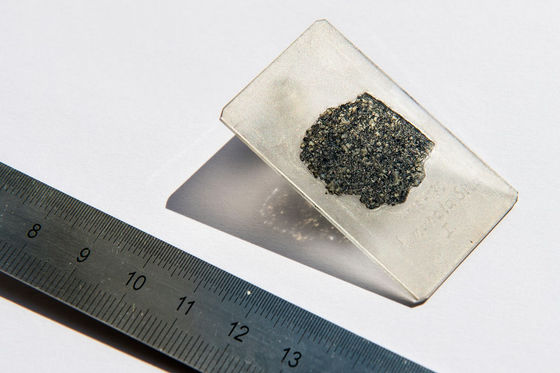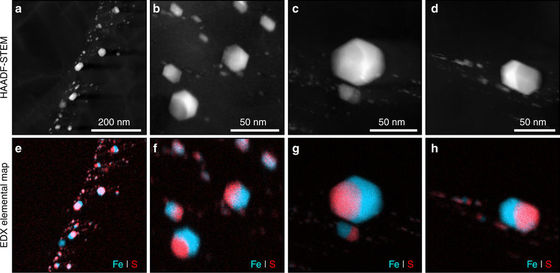Researchers point out that Almahata / Sitta meteorites that fell in 2008 are likely to be fragments of "lost planet"

It fell into the Nubian desert of Sudan in 2008Almahata / Sitta meteoriteIt contained diamonds. In the 2009 analysis the asteroid "1998 KU 2According to the research team of Philippe Gillette et al. Of the Earth and Planetary Science Institute (EPSL) et al., The Almahata / Sittah meteorite is said to be "lost" that was once in the early stage of the solar system It is highly probable that it is part of the planet.
A large planetary body inferred from diamond inclusions in a ureilite meteorite | Nature Communications
https://www.nature.com/articles/s41467-018-03808-6
Diamonds in Sudan meteorite 'are remnants of lost planet' | Science | The Guardian
https://www.theguardian.com/science/2018/apr/17/diamonds-in-sudan-meteorite-are-remnants-of-lost-planet
Analysis of the diamond contained in the Almahata / Sitta meteorite by the Gillette et al. Team found that diamonds were not generated at the time of collision, but were originally part of another planet, diamonds existed in the deep part It turned out that the possibility is high. In addition, it is impossible to create pressure to produce diamond contained in meteorite unless it is a planet of the same size as Mercury and Mars.
Astronomers have found that the solar system has formed dozens of planets of the size on the order of Mars from the moon during the first 10 million years and they finally become in the shape of the present solar system by repeating collisions I thought that it was. The research published this time may be one evidence to support this hypothesis.
In 2008 Almahata and Sitta meteorite exploded in the Nubian desert, 480 samples were collected by Khartoum University in Sudan. In the initial analysis we knew it was an unusual type of meteorite called "ureilite".

Also, in 2015, researchers in Japan and Switzerland confirm that the Almahahata-Sitta meteorite contains much larger diamonds than the diamonds generated by the pressure caused by collisions with the Earth, etc. did. For this reason, it was thought that the meteorite was originated from the "lost planet", but it seems there was no evidence to support.
The research team of Gillette et al. Found that the diamond in the meteorite has spots of iron-sulfur compounds that are thought to be formed only at a pressure of 20 Gpa or more, and this diamond is produced in the "unknown world" It is concluded that it was done. In other words, it suggests that there is a high possibility that it is a fragment of the "lost planet" once existed in the solar system.

James Wittke, who runs the meteorite laboratory at the University of Northern Arizona, said, "I am surprised that the size of the lost planet was as large as Mars if Mercury, We are presenting sufficient evidence to show the original appearance of Sitta meteorite. "
Related Posts:
in Science, Posted by darkhorse_log







